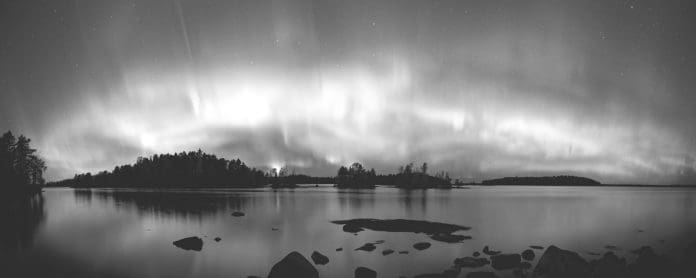The stars are far brighter than gems without measure, the moon is far whiter than silver in treasure, J.R.R. Tolkien wrote in his 1937 novel The Hobbit. But now, as the Elf Legolas states in the 2003 film adaptation of Tolkien’s novel The Return of the King, “The stars are veiled.”
Indeed, the stars are veiled now. Only 1% of Americans live under natural dark skies, according to the International Dark Sky Association; and only 20% can still glimpse the Milky Way, according to a 2016 National Geographic article.
As more development comes to the North Shore, the concern of artificial lighting hindering a view of the night sky grows. Finding a balance between development and preservation of natural lighting can be a delicate task.
The dark sky is the night sky without artificial light. Until about 100 years ago, life was lived by most under a day/night, bright/dark cycle. Studies by the National Institute of Health have shown negative effects on human health due to the widespread use and overuse of artificial lighting. The National Institute of Environmental Health Sciences has documented negative effects on animal life caused by artificial lighting at night.
The International Dark-Sky Association (IDA) wants to change how we use artificial lighting. Worldwide, the IDA works to protect the natural night sky by educating the public about the value of “natural darkness” and equipping them with guidance and best practices for protecting the night sky while still using light at night. In Minnesota, the International Dark Sky Places program (IDSP) seeks to identify and preserve the last vestiges of natural darkness.
Voyageurs National Park and the Boundary Waters Canoe Area Wilderness (BWCAW) are Minnesota’s two IDSPs. The BWCAW is the world’s largest International Dark Sky Sanctuary, the sanctuary title being reserved for the darkest, most remote IDSPs.
Besides being good health-wise, a dark sky also has historical and cultural significance. The night sky was very important to many civilizations for keeping track of time, marking the seasons, and using the stars to map various cultural myths. The night sky has also served as a muse to many artists, awestruck by the beauty of the stars. Imagine future artists not being able to see what inspired their predecessors.
What are some simple, low-cost things people can do to protect their night sky? Closing the window shades at night when the lights are on is one step to keep indoor light from leaking outdoors. Being mindful of how many lights you leave on is another step. “Lighting facts” are listed on lightbulb boxes, and making sure color temperatures are 3,000 K or lower for outdoor bulbs is important. Bulbs of this color temperature have a “warm” color that is safer to our health and the health of the environment, according to the IDA.
Using fully-shielded light fixtures outdoors shines the light on the ground where we want it, not up in the air, where it is wasted. 30% of lighting in the U.S. is wasted, according to the IDA, costing Americans $3 billion annually. A final thing you can do to reduce light pollution is to add timers or motion detectors to outdoor lights. Motion detectors save electricity when no one is around, but provide instant light when triggered. This can deter crime by startling criminals, as well as alerting the homeowner by the sudden light. Tonight, look up at the stars. Admire their beauty and think of ways to unveil the stars for future generations. Learn more about dark sky and development on February 6th at 7 pm. There will be a Silver Bay City Council zoom meeting open to all on the Silver Bay website: www.silverbay.com.



